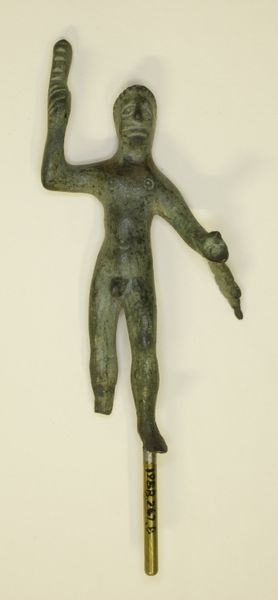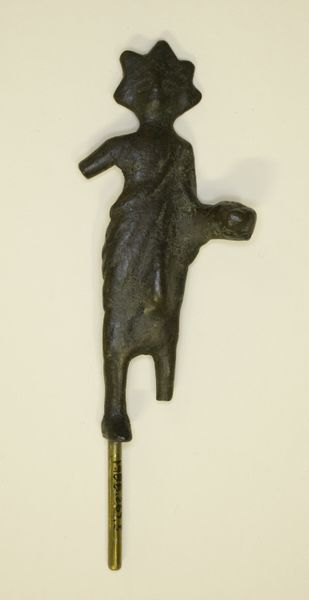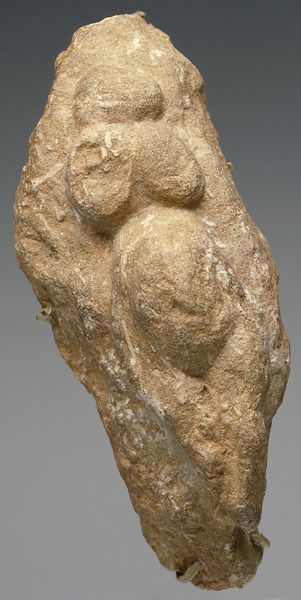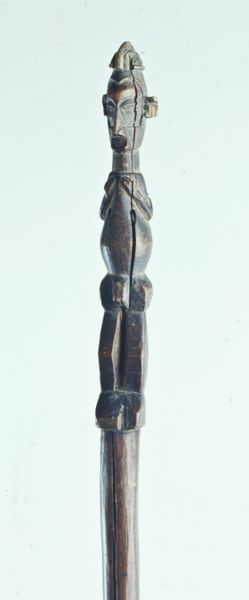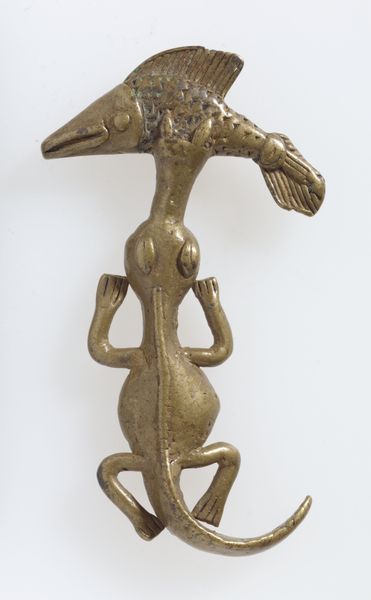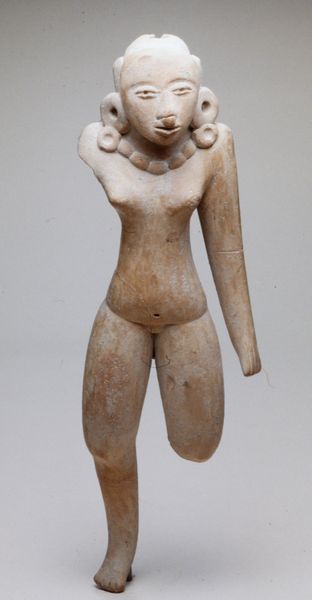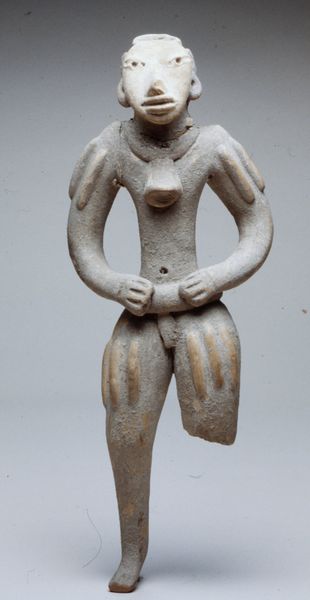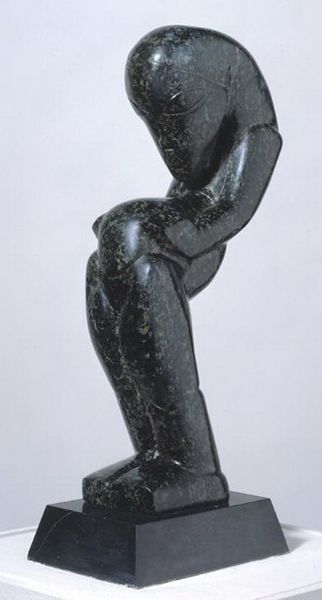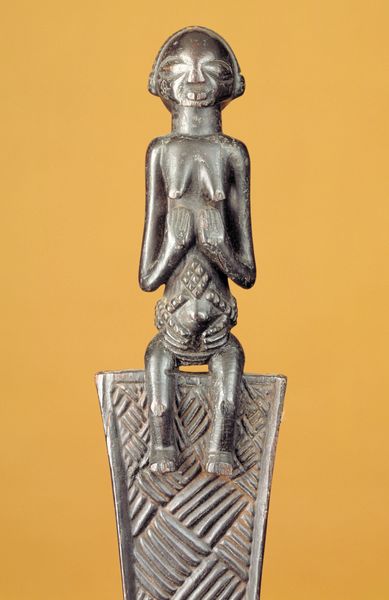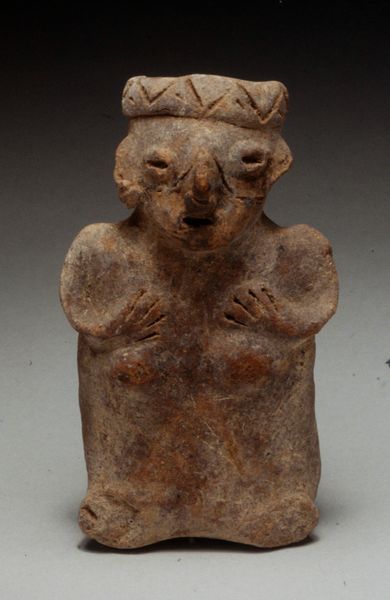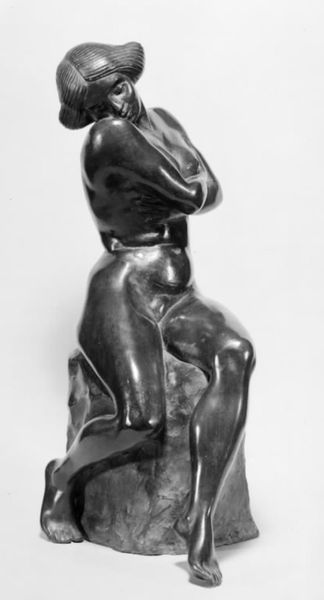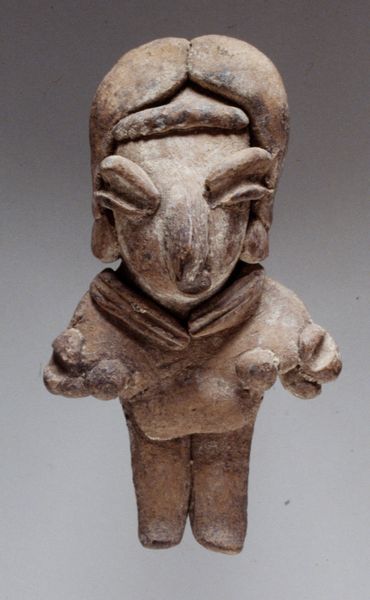
sculpture
#
sculpture
#
figuration
#
sculpture
Dimensions: H. 9.2 cm (3 5/8 in.)
Copyright: Public Domain
Editor: This intriguing wooden sculpture, titled "Standing Figurine with Missing Leg," was crafted around the year 800 by the Olmec people. The smooth, dark wood and the figure's slightly sorrowful expression create a sense of profound mystery. How do you interpret this work, particularly considering its fragmentary state? Curator: I see a powerful representation of resilience and fragmented histories. Consider the Olmec civilization's place within Prehistoric and Indigenous American art, reflecting complex cosmologies and social structures now partially obscured by time and colonial narratives. The missing leg isn't simply damage; it's a poignant reminder of historical disruptions, erasures, and the lasting impact of colonization on indigenous cultures. How might we, as viewers, engage with this history of loss and survival? Editor: That's a perspective I hadn’t considered. I was focused on the individual figure, but the damage reflects a larger cultural narrative. Curator: Exactly! The figure also embodies concepts of identity and representation. It asks, how do we reconstruct fragmented histories and represent identities that have been marginalized or silenced? It compels us to consider the politics of display and the ethical responsibility of museums in interpreting and exhibiting cultural artifacts. It makes me wonder about how gender or social status might be conveyed within this type of figurine. What does the figure's posture communicate, if anything? Editor: Its stance does look confident despite the damage. Perhaps this defiance, this "standing" amidst loss, represents endurance. Curator: Precisely. The statue may symbolize a leader or ancestor. A single, missing part does not define it, but rather the entirety reflects identity, spirit, and history. Editor: I see now that this piece is more than an artifact; it is a resilient statement of cultural survival. Curator: Yes. This conversation exemplifies art's ability to bridge the past and the present while raising vital questions about identity, representation, and social justice.
Comments
No comments
Be the first to comment and join the conversation on the ultimate creative platform.

